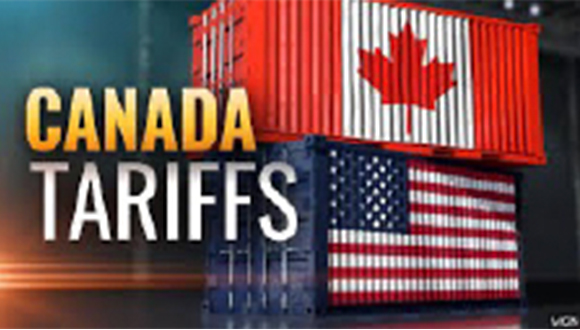Trump Raises Tariffs on Canadian Goods, but CUSMA Offers Relief
As of August 1, 2025, President Trump has increased tariffs on Canadian goods that do not comply with the Canada–United States–Mexico Agreement (CUSMA), raising the rate from 25% to 35%. However, the impact may be less severe than it appears at first glance.
CUSMA Compliance Eases the Blow
CUSMA remains a crucial buffer against these rising tariffs. Currently, about 80–90% of Canadian exports to the U.S. are CUSMA-compliant, meaning they avoid the 35% tariff. With increased compliance efforts, coverage could potentially reach 95%, especially if small and medium businesses streamline their documentation.
Real Tariff Impact Lower Than Headline Rate
While the new tariff rate is significant, the average tariff across all Canadian exports is expected to remain around 5%. However, certain sectors such as steel, aluminium, lumber, and autos remain vulnerable due to lower compliance levels or industry-specific duties.
Canada’s Next Move
Despite the challenges, Canada is still well-positioned to negotiate improved terms in key sectors—including aluminium, steel, lumber, autos, and now copper—potentially reducing friction in cross-border trade in the months ahead.
Bob Smith, CHPTA Data Analyst, Sources NBC, MSNBC, CBC, CTV
The CHPTA provides a monthly business conditions report and webinar, focusing on market trends and strategic guidance. The report is divided into business, conditions, and pricing segments, providing historical data and strategies for the future. It covers key market segments like labour, retail trade, wholesale trade, imports, foreign exchange rates, and Canadian diesel fuel rates. The report also tracks underpricing, including trucking and freight charges, and provides overall direction and volatility indicators for businesses looking to stay competitive in today’s business climate. To receive a copy of the full report please contact Michael Jorgenson at mjorgenson@chpta.ca
Companies Are Passing Rising Tariff Costs on to U.S. Consumers, Real-Time Pricing Data Show
The US has seen an annual increase in inflation, driven by steep tariffs on imports from China, according to official data released last week for June. The Harvard Business School Pricing Lab uses real-time online pricing data from four major US retailers to track the prices of over 300,000 products over time, using product code lookups and AI to determine their country of origin. The lab monitors goods from Canada, Mexico, China, and domestically produced goods.
The Federal Reserve’s latest anecdotal survey of domestic economic conditions, known as the “Beige Book,” found that businesses across the economy are passing increased input costs from tariffs along to consumers in the form of higher prices. Higher costs from tariffs were reported by businesses in all of the Fed’s 12 regional districts, and many made the choice to raise prices as a result. The “Beige Book” reported that many firms passed on at least a portion of cost increases to consumers through price hikes or surcharges.
Inflation in the Labour Department’s consumer price index (CPI) jumped in June, partly due to the tariffs. The CPI ticked up to a 2.7% annual increase last month from 2.4% in May and 2.3% in April. Many economists have been predicting that inflation coming from tariffs would show up in prices over the summer after the clearing of inventories of wholesale goods purchases made prior to the tariffs.
Fitch Ratings recently put the aggregate U.S. tariff rate at 14.1%, the highest in decades. While President Trump has instituted a 10% general tariff, along with China-specific tariffs and targeted tariffs on some individual goods, his country-specific “reciprocal” tariffs were paused until Aug. 1 as trade negotiations continued.
The U.S. dollar is also losing value relative to other currencies, having fallen about 9% since the beginning of the year amid President Trump’s trade war. Economists say a weaker dollar could boost inflation, as the dollar has depreciated since the Trump administration began imposing tariffs.
Source: Globe and Mail
Source: The Hill
Manufacturers Report Less Tariff Impact in May Compared With April
Statistics Canada reports that fewer manufacturers reported being affected by tariffs in May than in April, with total manufacturing sales down 0.9% to $68.7 billion in May, marking the lowest level since January 2022.
Nearly half of manufacturers reported tariff hits in May, about 10% points lower than the month before, when the bulk of U.S. trade levies took effect. The May data does not capture U.S. President Donald Trump’s move to double steel and aluminium tariffs in June or his recently announced plans to impose 50% tariffs on copper imports.
Manufacturers told Statistics Canada in May that they were dealing with tariffs effects mostly through higher prices and changes in demand.
Source: Globe and Mail
Source: The Star












